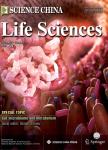Genome size and sequence composition of moso bamboo: A comparative study
Genome size and sequence composition of moso bamboo: A comparative study作者机构:Institute of Crop Science/Institute of Bioinformatics Zhejiang University Hangzhou 310029 China Zhejiang Anji Bamboo Exposition Garden Anji 313300 China Chinese National Human Genome Center at Shanghai Shanghai 201203 China The Research Institute of Subtropical Forestry Chinese Academy of Forestry Fuyang 311400 China
出 版 物:《Science China(Life Sciences)》 (中国科学(生命科学英文版))
年 卷 期:2007年第50卷第5期
页 面:700-705页
学科分类:0710[理学-生物学] 0907[农学-林学] 07[理学] 08[工学] 0829[工学-林业工程] 09[农学] 071007[理学-遗传学] 0901[农学-作物学] 090102[农学-作物遗传育种]
基 金:Supported by the Program for New Century Excellent Talents in University of China
主 题:flow cytometry (FCM), genome size, GSS, Phyllostachys pubescens, repeat elements
摘 要:Moso bamboo (Phyllostachys pubescens) is one of the world s most important bamboo species. It has the largest area of all planted bamboo―over two-thirds of the total bamboo forest area―and the highest economic value in China. Moso bamboo is a tetraploid (4x=48) and a special member of the grasses family. Although several genomes have been sequenced or are being sequenced in the grasses family, we know little about the genome of the bambusoids (bamboos). In this study, the moso bamboo genome size was estimated to be about 2034 Mb by flow cytometry (FCM), using maize (cv. B73) and rice (cv. Nipponbare) as internal references. The rice genome has been sequenced and the maize genome is being sequenced. We found that the size of the moso bamboo genome was similar to that of maize but significantly larger than that of rice. To determine whether the bamboo genome had a high proportion of repeat elements, similar to that of the maize genome, approximately 1000 genome survey sequences (GSS) were generated. Sequence analysis showed that the proportion of repeat elements was 23.3% for the bamboo genome, which is significantly lower than that of the maize ge-nome (65.7%). The bamboo repeat elements were mainly Gypsy/DIRS1 and Ty1/Copia LTR retrotrans-posons (14.7%), with a few DNA transposons. However, more genomic sequences are needed to con-firm the above results due to several factors, such as the limitation of our GSS data. This study is the first to investigate sequence composition of the bamboo genome. Our results are valuable for future genome research of moso and other bamboos.



